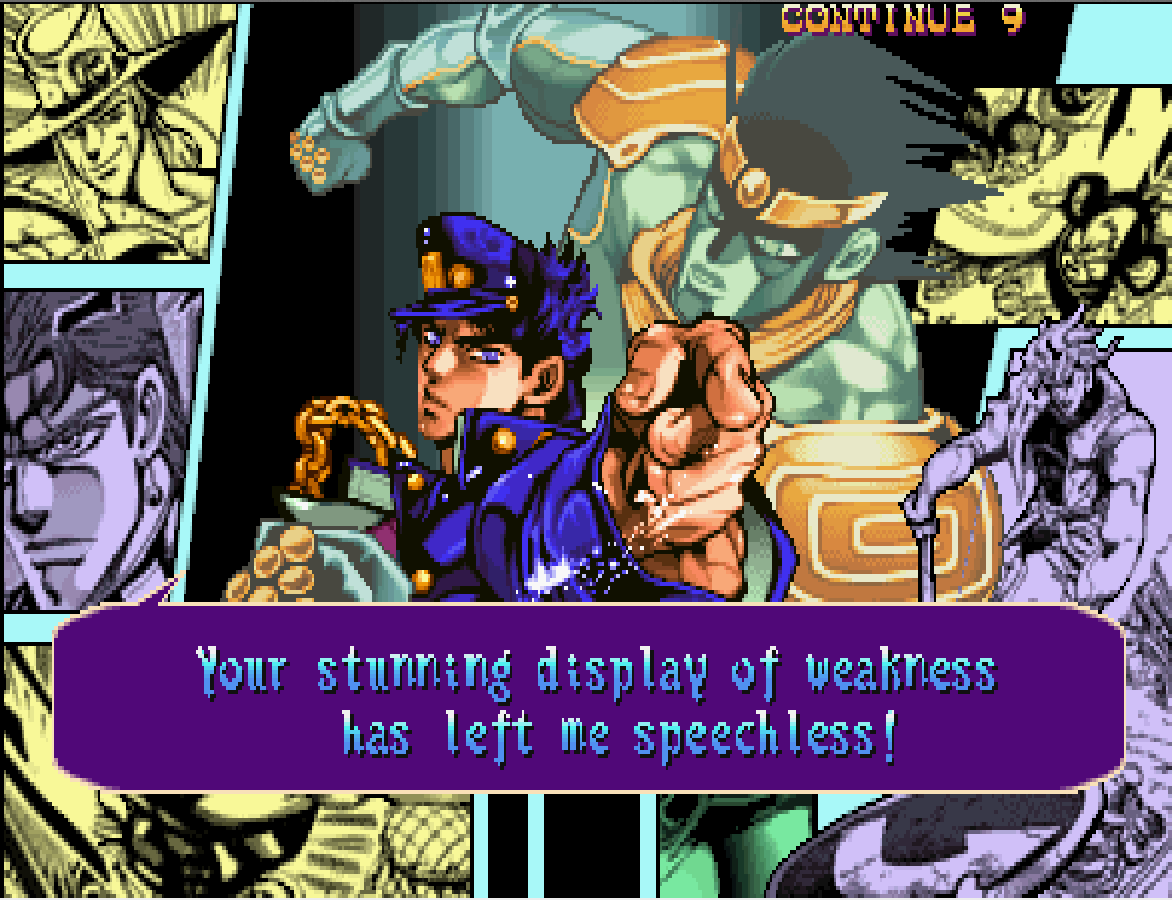Heritage for the Future. JoJo's Bizarre Adventure: Heritage for the Future (ジョジョの奇妙な冒険 未来への遺産., JoJo no Kimyō na Bōken Mirai e no Isan) is an updated version of the game, released on September 13, 1999, on the CPS-3 arcade system. This version featured eight additional playable characters and adjustments to.
- Heritage For The Future Ost
- Heritage For The Future Jotaro Theme
- Heritage For The Future Wiki
- Heritage For The Future Rom

Heritage For The Future Ost
- Star Platinum: Heritage For The Future. E: Ora Barrage (Does 6.54 Dmg) Does Unusual Dmg. 6-7 Dmg Also Ends With A Very Good Punch (100 Dmg Pog) G: Pose You Pose With SP:HFTF While Hearing To Jotaro Kujos Theme From JJBA:HFTF. N: Qoutes Yarou Yare Yare Daze Your Judge Will Be My Stand Yarou (quotes have been updated in the game).
- A community server dedicated to the 90's Capcom arcade fighting game 'JoJo's Bizarre Adventure Heritage For The Future' 16,591 members.
- JoJo's Bizarre Adventure: Heritage for the Future is the updated version of JoJo's Bizarre Adventure game released in 1998 on arcade by Capcom. It became the sixth and last game released for the CPS-3 board.
- The Future is Heritage is an international network and platform that aims to strengthen the position of young people working in the heritage field throughout Europe.
Heritage For The Future Jotaro Theme


Heritage For The Future Wiki

Heritage For The Future Rom

The guide provides teacher educators and teachers with an understanding of the concept of intangible cultural heritage (ICH) and explains why ICH should be integrated into the curriculum in tandem with the principles and perspectives of Education for Sustainable Development (ESD). This guide explains how the strategic incorporation of ICH elements and ESD principles into the curriculum can enable learners to gain the knowledge and skills that are necessary for ensuring sustainable development in the future. Within the framework of the 2003 Convention for the Safeguarding of the Intangible Cultural Heritage, this guide is intended to raise the capacity of teachers to incorporate local elements of ICH, and principles of ESD, into teaching and learning practices. The guide provides examples of how the teaching and learning of ICH for sustainable development has been creatively incorporated into several disciplines--such as mathematics, science, music and social studies--in various cultural settings. It also suggests steps for preparing and assessing lesson plans. UNESCO developed this guide based on the results of pilot projects conducted in four countries in the Asia-Pacific region, where participants developed locally-customized guidelines and materials for the incorporation of ICH elements and ESD principles into teaching and learning in schools. The examples of ICH given in this guide are not more significant expressions than others and are not necessarily those that should be prioritized, they are just illustrative samples. [Tim Curtis and Elizabeth Cardosa also contributed to this publication.]